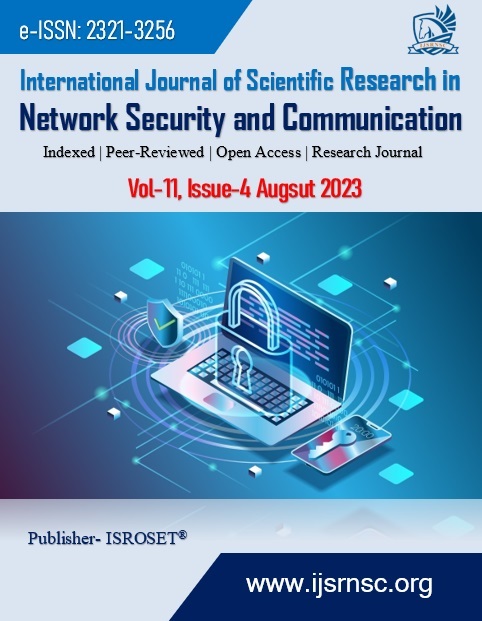Credit Risk Assessment in Non-Banking Financial Institutions: Lessons from Shadow Banking Sector
Keywords:
Shadow Banking Sector, Machine LearningAbstract
This research paper explores the credit risk assessment practices in non-banking financial institutions (NBFIs) with a focus on lessons learned from the shadow banking sector. NBFIs have gained significant prominence in the financial landscape, and their role in credit intermediation has expanded. However, the inherent complexities and unique characteristics of NBFIs pose challenges to credit risk assessment. Drawing insights from the shadow banking sector, this study aims to identify key lessons and best practices that can enhance credit risk assessment in NBFIs. The research adopts a qualitative approach, analyzing relevant literature, regulatory frameworks, and case studies to develop a comprehensive understanding of credit risk assessment practices in NBFIs. The findings highlight the importance of robust risk management frameworks, adequate risk governance, effective monitoring mechanisms, and the use of innovative tools and technologies in mitigating credit risks in NBFIs. The research concludes by providing recommendations for policymakers, regulators, and NBFIs to strengthen credit risk assessment practices and ensure the stability and resilience of the financial system.
References
Brunnermeier, M. K., Eisenbach, T. M., & Sannikov, Y. (2012). Macroeconomics with Financial Frictions: A Survey. National Bureau of Economic Research, 2012.
Claessens, S., & Ratnovski, L. (2014). What is shadow banking? International Monetary Fund, 2014.
Ricks, M., Crawford, K., & Menand, L. (2021). Nonbank-Centric Finance: A Policy Framework. Brookings Institution, 2021.
Altman, E. I., & Saunders, A. (1998). Credit risk measurement: Developments over the last 20 years. Journal of Banking & Finance, 21(11-12), pp.1721-1742, 1998.
Borio, C. (2012). The financial cycle and macroeconomics: What have we learnt? Journal of Banking & Finance, 45, pp.182-198, 2012.
Louzis, D. P., Vouldis, A. T., & Metaxas, V. L. (2012). Macroeconomic and bank-specific determinants of non-performing loans in Greece: A comparative study of mortgage, business, and consumer loan portfolios. Journal of Banking & Finance, Vol.36, Issue.4, pp.1012-1027, 2012.
Duffie, D. (2019). Prone to Fail: The Pre-Crisis Financial System. Journal of Economic Perspectives, Vol.33, Issue.1, pp.81-106, 2019.
Pozsar, Z., Adrian, T., Ashcraft, A., & Boesky, H. (2013). Shadow banking. Federal Reserve Bank of New York Staff Reports, no. 458, 2013.
Borio, C. (2011). Implementing a macroprudential framework: Blending boldness and realism. Capitalism and Society, Vol.6, Issue.1, 2011.
Schuermann, T. (2014). Stress Testing Banks. International Journal of Forecasting, Vol.30, Issue.3, pp.717-728, 2014.
Senior Supervisors Group. (2009). Risk Management Lessons from the Global Banking Crisis of 2008.
Basel Committee on Banking Supervision (BCBS). Guidelines - Corporate governance principles for banks. Bank for International Settlements, 2015.
BCBS. Principles for Effective Risk Data Aggregation and Risk Reporting. Bank for International Settlements, 2013.
KPMG. Developing an effective governance operating model: A guide for financial services boards and management teams, 2015.
Bank for International Settlements (BIS). Principles for sound liquidity risk management and supervision, 2008.
Bank for International Settlements (BIS). Big tech in finance: opportunities and risks. BIS Annual Economic Report, 2019.
Marshall, A., et al. Big Data: The transformational tool in financial services. Global Economy and Finance Journal, Vol.9, Issue.3, pp.21-35, 2016.
Sasidharan, B. (2017). Cloud Computing: Evaluating the risks. Information Systems Control Journal, 2, 2017.
Tapscott, D., & Tapscott, A. (2016). Blockchain revolution: how the technology behind bitcoin is changing money, business, and the world. Penguin, 2016.
Berger, A. N., & Davies, S. M. (1998). The Information Content of Bank Examinations. Journal of Financial Services Research, 14, pp.117-144, 1998.
Drehmann, M. (2009). Stress-tests: What is the aim? A policy-maker`s perspective. In S. L. Hansen & S. McMahon (Eds.), Asset Prices and Monetary Policy. Reserve Bank of Australia, pp.131-153, 2009.
Bholat, D. (2018). Machine learning, artificial intelligence and the future of money and banking. Speech at Future of Money and Banking Conference, London, 2018.
Basel Committee on Banking Supervision (BCBS). Enhancing corporate governance for banking organisations, 2006.
Financial Stability Board (FSB). Guidance on Supervisory Interaction with Financial Institutions on Risk Culture, 2014.
Bhattacharya, S., Boot, A. W., & Thakor, A. (2011). Credit in the macroeconomy. Annual Review of Financial Economics, 3, pp.167-200, 2011.
Acharya, V. V., Pedersen, L. H., Philippon, T., & Richardson, M. (2011). Measuring systemic risk. Federal Reserve Bank of Cleveland Working Paper No. 11-37, 2011.
Luoto, J., McIntosh, C., & Wydick, B. (2007). Credit information systems in less developed countries recent history and a test. Economic Development and Cultural Change, Vol.55, Issue.2, pp.313-334, 2007.
Downloads
Published
How to Cite
Issue
Section
License

This work is licensed under a Creative Commons Attribution 4.0 International License.
Authors contributing to this journal agree to publish their articles under the Creative Commons Attribution 4.0 International License, allowing third parties to share their work (copy, distribute, transmit) and to adapt it, under the condition that the authors are given credit and that in the event of reuse or distribution, the terms of this license are made clear.









